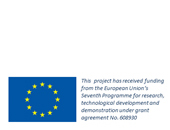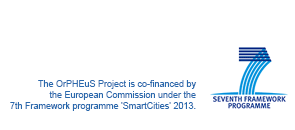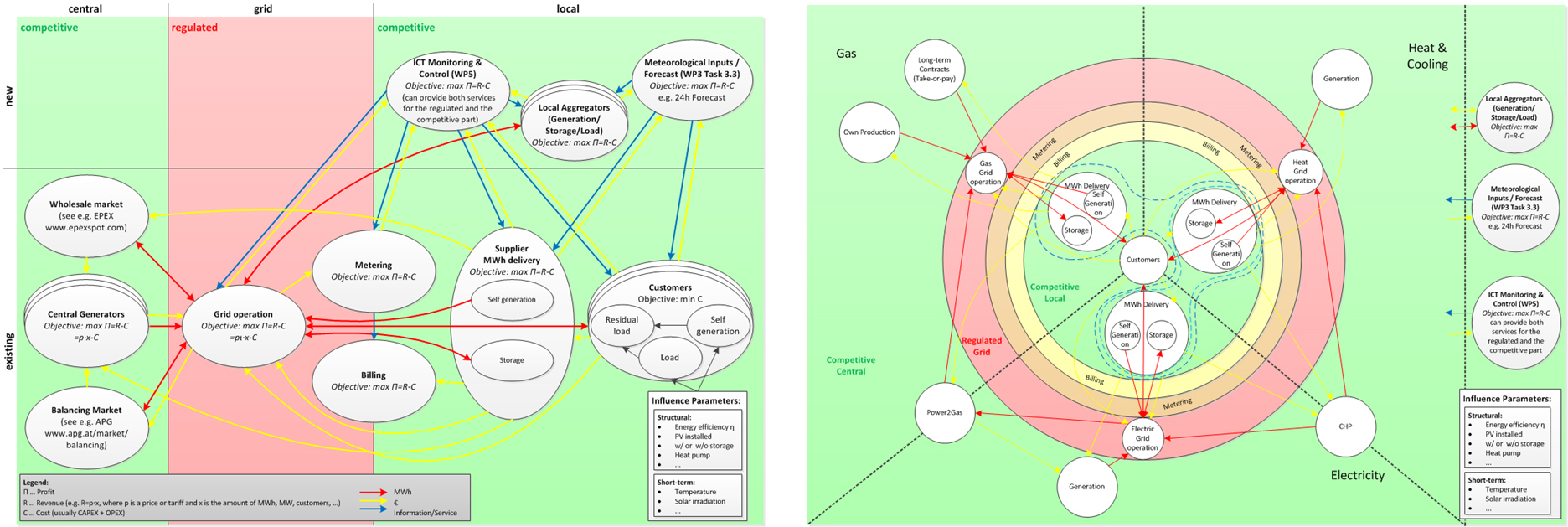Concept
The OrPHEuS project elaborates a Hybrid Energy Network Control System for Smart Cities implementing novel cooperative local grid and inter-grid control strategies for the optimal interactions between multiple energy grids by enabling simultaneous optimization for individual response requirements, energy efficiencies and energy savings as well as coupled operational, economic and social impacts. Starting from existing system setups in two cities (city of Skellefteå, in Sweden and the city of Ulm in Germany) enhanced operational scenarios are demonstrated for today’s market setup, as well as for future market visions.
The control strategies based on a Cooperative Coexistence design aim for:
- Reduction of operational costs
- Ensure robust business models and market design with high renewable resources penetration
- Customer satisfaction across the hybrid energy networks.
Cooperative Control Strategies are designed to achieve improved energy utilization levels and power balancing control throughout all energy network operations.
The aim of the “cooperative” nature of the control design targets involves (Fig.1):
a) on one hand a technical optimization within and across the involved grids linked on the coupling points;
b) and on the other hand to provide a win-win market situation to exploit technical benefits with the economical and societal benefits for all involved stakeholders.
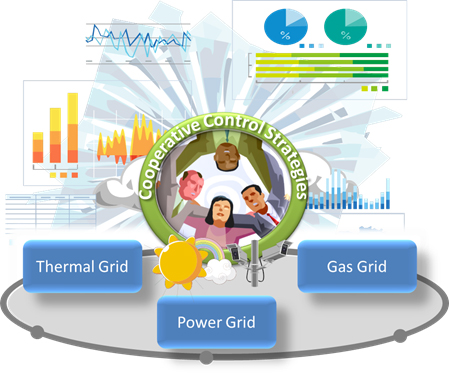
Fig. 1 OrPHEuS Project Business and Technological Concept view
Fig. 2 visualizes the OrPHEuS Cooperative Coexistence scientific concept. The project creates the advancements over today’s existing situation by an evolution of the quality of the interactions of the energy systems. Advancement 1 represents the increasing quality of the cooperativeness followed up by Advancement 2, which expands the business models for a further quality level in cooperative integration.
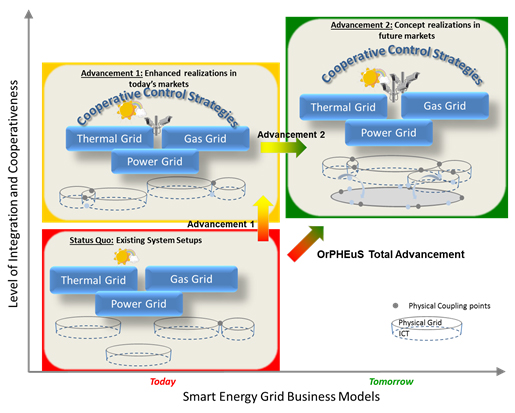
Fig. 2 OrPHEuS Project Results mapped on parameters for Cooperative Control Strategies and business extensions
In detail, the novel aspect of the OrPHEuS project beyond the state of the art is founded on the following two advancements, providing a strong contribution in optimizing hybrid energy grids in smart cities:
Status Quo: Existing system setups: For the quantitative evaluation of new business models and cooperative control strategies developed in the OrPHEuS project in terms of technological, economic and social benefits it is important to have a reference scenario available. Hence, at first, the status quo is simulated by initializing the business models of the different market participants with the existing system setups. This means that the currently existing technology portfolio, market interactions, regulatory framework and the currently existing tariffs in the demonstration sites are incorporated in the different models.
Advancement 1: Enhanced realization of today’s markets: from the existing physical coupling points of multi domain distribution energy grids and within today’s business models (i.e. today’s economic interactions of all market participants involved) to the exploitation of enhanced physical coupling options and enhanced control strategies.
Advancement 2: Concept realizations in future markets: While the current business world implies certain restrictions to the interplay of various stakeholders, the OrPHEuS project reaches beyond the boundaries of existing business models by exploring opportunities for Cooperative Coexistence and System integration.
Objective 1: Creation of the concept for new business models in smart hybrid energy networks
What is the techno-economic set up for smart hybrid energy networks business models?
The tasks within Objective 1 provide the foundation and framework of the project.
The Status Quo of technical, economic and social patterns of energy service provision in distribution networks.
This report provides a qualitative description of energy service provision. The historical development of energy networks in dense areas is outlined and various factors determining the patterns of energy distribution grids are demonstrated, investigated and categorized into technological, economic and social influences. Finally several matrices are presented, providing a structure for describing the status quo and outlook of energy service provision in hybrid networks.
Use cases of various markets participants in a hybrid distribution network.
Use cases have been created in the two selected demonstration sites. The use cases reflect the challenges, benefits and goals of each identified energy market stakeholder.
Qualitative frameworks describing the future relationships and interdependencies between different market participants of hybrid energy grids.
Objective 2: Adaptation of the existing monitoring systems for the fine-granulated energy hybrid network control operations
What is necessary to monitor and analyse in the energy grid? How should monitoring systems be adapted for smart hybrid energy networks nowadays?
The tasks within Objective 2 focus on the monitoring and analysing of energy hybrid network considering the following aspects for each demonstration site:
- Meteorological characteristics.
- Use of ICT/M2M infrastructures for monitoring, managing, and filtering data related to energy flows.
- Substations usage and the network coupling points.
This report describes a reference M2M platform design, identifies and concretizes project-related challenges, and designs four platform extensions (self-configuration, consumer behaviour analysis, data filtering, and M2M cloud systems) for tackling the identified challenges, while it also examines further ICT tasks.
Finally, it discusses the (future) usage or evaluation of these extensions in conjunction with other WPs. Two of the most important M2M platform-related tasks of OrPHEuS are:
- Smart data filtering of OrPHEuS data (i.e., hybrid energy grid data)
- Examination of hybrid energy grid control systems as part of Smart City Operation Centers (and their integration into the latter)
The physical coupling points in hybrid energy grids.
This report gives a short introduction to the different energy grids and an overview about available technologies which are necessary for hybridization between the different energy grids. In addition, the nominal and dynamic parameters for the technologies are explained.
Validation of Metrics for the Comprehension of real-life data with virtual information
This document describes how the metrics required to quantify the effect of environmental conditions (solar irradiance, ambient temperature) on energy systems can be estimated by remote sensing, meteorological forecasts or simulation models. Metrics estimated with these options, denoted as virtual measurements, are validated against in-situ and ground-based measurements in Germany and Sweden. The impact of high shares of photovoltaic supply on the lifetime of local power transformers is also estimated for the demonstration site of Ulm (Germany).
Identifying challenges in the demonstration sites – Use Cases
These use cases are interesting research questions comprising issues and targets of various market participants in a hybrid energy distribution network, which are planned to be tackled within the OrPHEuS project. The use cases presented here shall help to identify the primary principles of energy processes in different energy distribution grids.
Altogether five use cases have been defined. They are motivated by actual challenges in the OrPHEuS demonstration sites and each of these use cases focuses on a special problem or objective of a particular market participant. Special attention has been paid to the hybrid and cooperative character of each use case as well as its relevance for the test sites. In this way it can be ensured that each market participant is represented properly in the OrPHEuS project and by highlighting the hybrid aspects and possible cooperative control strategies the relevance of each use case for the project can be justified. Furthermore, a sixth ‘special use case’ has been elaborated that examines the performance of the entire hybrid energy distribution system subject to extreme weather conditions.
| No. | Title | Major Goals | Target User | Target Demo Site |
| 1 | Phase-out of oil usage for peak heat generation |
|
District heating supply companies (and Distribution system operators (DSOs)) |
Skellefteå |
| 2 | Single- versus multi-utility generation and customer supply |
|
Supply companies | Ulm / Skellefteå |
| 3 | Optimal asset management and extension planning of distribution grids |
|
Distribution system operators (DSOs) |
Ulm / Skellefteå |
| 4 | Maximizing local consumption of remote self-generation |
|
Customers (‘Prosumers’) | Ulm |
| 5 | Dynamic end-user loads and comfort levels |
|
Customers | Ulm / Skellefteå |
| Special | Weather-related seasonal extreme situations |
|
All | Ulm / Skellefteå |
Objective 3: Extended hybrid energy network modelling of citie's hybrid energy networks
A simulation of the behaviour of improved hybrid energy networks.
The overall aim of the tasks whithin Objective 3 is the development of an enhanced multi domain simulation environment (focusing on electricity and district heating) for the definition of technical requirements for cooperative control strategies, as well as for validation of related control concepts.
Thermal domain simulation
The implementation of the district heating system in Skellefteå (supply units, distribution grid, storage and demand models) and the thermal systems in Ulm (demand of buildings and supply and storage units) is done in the simulation environment Dymola/Modelica based on Modelica Fluid library specifications and on the extension of it resulting in the library “DisHeatLib” developed in the past 7 years by AIT. The Modelica language is an open source modeling language, consisting of a language standard definition along with a large collection of basic model components from various fields, the so-called Modelica Standard Library.
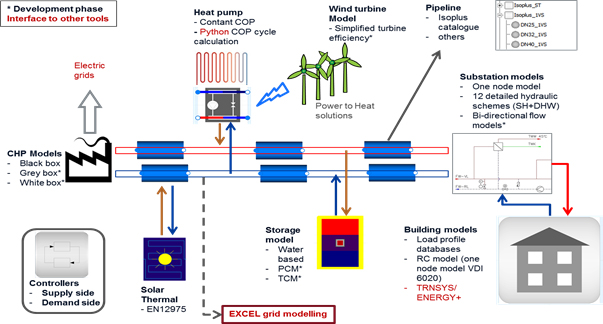
Electricity domain simulation
The implementation of the electricity grids for both Skellefteå and Ulm demo sites is done in the simulation environment DIgSILENT PowerFactory (DIgital SImuLation and Electrical NeTwork calculation program). PowerFactory is a commercial computer aided engineering tool for the analysis of industrial, utility, and commercial electrical power systems. It has been designed as an advanced integrated and interactive software package dedicated to electrical power system and control analysis in order to achieve the main objectives of planning and operation optimization.
Co-simulation
The prerequisite for a model-based evaluation of hybrid system solutions is the detailed simulation of not only the individual subsystems but also their dynamic interactions. Unfortunately, the state-of-the-art simulation tools for energy systems are domain-specific, i.e. they are by themselves not well suited for modeling and simulating hybrid energy systems that integrate subsystems across the borders of traditional engineering domains. A solution to this challenge can be provided by a co-simulation approach, which couples the existing domain-specific state-of-the-art tools in a way that enables a dynamic multi-physics simulation of the hybrid system.
By basing the co-simulation framework on the de-facto standard introduced by the FMI specification, the corresponding software developed within the OrPHEuS project will be re-usable for follow-up projects. This ensures a sustainable development process beyond the scope of OrPHEuS in the future.
Get involved!
Legal Notice
Last Update
General update: 27-11-2020 12:57
